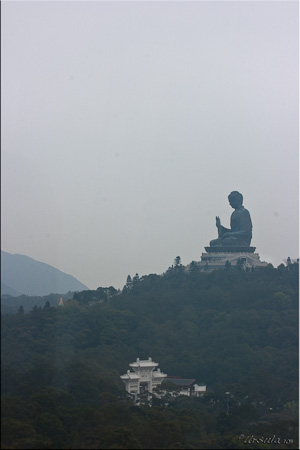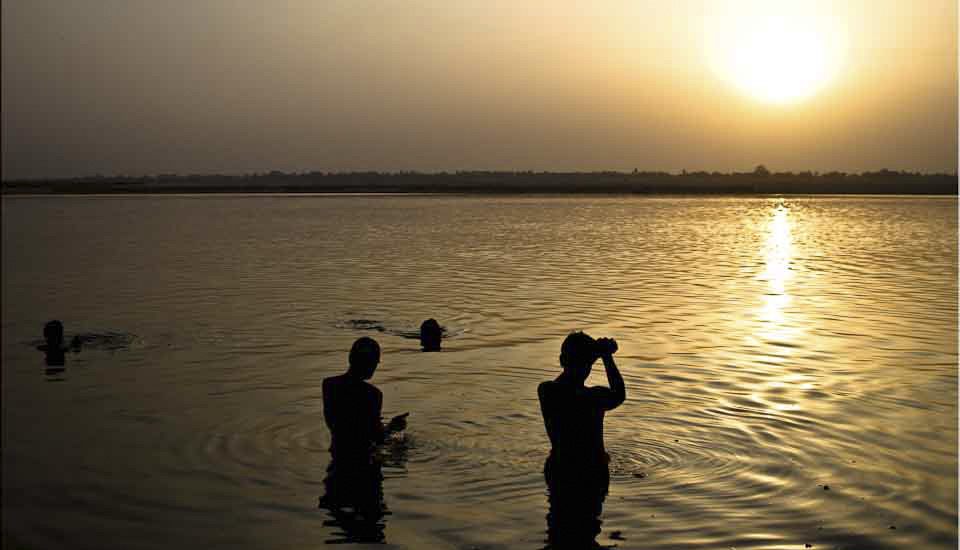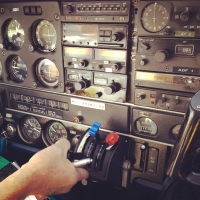
The Giant Buddha, Lantau
When I think of Hong Kong, I think of a bustling metropolis with cosmopolitan shops, sparkling lights and tall buildings.
And it is true: as one of “The Four Asian Tigers”, Hong Kong is a financial centre with modern architecture reaching into the sky; a pulsating commercial network which never sleeps; and one of the most densely populated territories in the world.
But it is so much more than that.
At least in part because of it’s steep mountainous terrain, less than 25% of the territory’s landmass (which includes Kowloon, The New Territories, and over 200 other islands) is developed. Elsewhere, there are parks, nature preserves, and villages which seem not to have changed much over the centuries.
So, Hong Kong has a surprising amount of green space and it is easy to ‘escape’ the hectic modern city and find a quiet timelessness.
On my visit to Hong Kong last month, I took the opportunity to go to Lantau, the largest island in the territory, to revisit the Po Lin Monastery and the giant bronze Tian Tan Buddha at Ngong Ping.
The last time we visited this area of Lantau, we had to take a bus across the island to the temple. These days, access is much easier, thanks to the new cable cars: the “Ngong Ping 360”. Because I had booked with a group tour, I was saved what looked like a tedious wait in the terminal – though I felt pangs of guilt about queue-jumping waiting monks!

Monks in Waiting ~ Tung Chung Terminal

"Ngong Ping 360" Car and Riders

Cable-Car View over Tung Chung Bay
The views on the twenty-five minute ride from Tung Chung Bay where Hong Kong’s international airport is located, over the North Lantau Country Park, and out to the Ngong Ping Plateau, truly are in all directions, especially as some of the cable cars are fitted with perspex floors! These see-through floors gave us a bird’s-eye perspective as we rode over walkers treading the wooden boards below. According to the literature, you can walk the track in two hours, but I was happy to have the lofty advantage.

The Wilds of North Lantau Country Park

Walkers Below ~ North Lantau Country Park
The Ngong Ping Plateau area has been developed (over-developed?) with the advent of the cable-car, and before reaching the temples and monastery, you have to run the gamut of coffee shops, restaurants and trinket sales.

Sighting the Tian Tan Buddha from the Ngong Ping Themed Village

Monks on a Mission! Heading to the Tian Tan Buddha
It is a long climb up and around the three floors under the buddha, but well worth it: this buddha is one of my favourites. Twenty-six meters high according to one source and thirty-four meters tall according to another, the statue is big! Seated on on a lotus throne, with his left hand resting in his lap, giving dhana, and his right hand raised, removing affliction, the bronze buddha radiates calm.

With His Left Hand Resting,Giving Dhana, The Giant Seated Buddha Radiates Calm

Buddha Dreams (Processing Notes: Maximum Fill Light and Colour Saturation)

One of the "The Offering of the Six Devas" Satues

Beautiful Offerings

Up 268 Steps
The statue is particularly impressive from the bottom of the long staircase at the front. Many visitors, when visiting the Buddha, prefer to climb up the 268 steps before circling the lotus platform at the top.
We were told that all other great Buddha statues face south (as I have no sense of direction, I can’t argue with this, but somehow I can’t believe that this is true in Thailand): according to our guide, the builders were running out of money, and the Chinese government offered to make up the shortfall, providing the statue faced Beijing, to the north.
Sitting below the giant statue are the very Chinese Buddhist temples of the Po Lin Monastery, which we visited before heading to the centuries-old fishing village of Tai O, also on the north side of Lantau. Here you can stock up on everything from salted fish and sea-cucumbers, to fish lungs and shrimp paste, before returning home.

Temple at Po Lin Monastery

The Red and Gold of a Chinese buddhist Temple, Po Lin Monastery

Fading Red and Gold in the Temple Grounds

Tai O Fishing Boats

Dried Fish Lungs: VERY Expensive, but Reputed to Keep you Looking Young!

Elderly Woman, Tai O (I Wonder if SHE Uses Fish Lung Face Cream?)

Heading Home: Over the Hills of North Lantau

From the fishing village back to the city: a short drive but a world away!
Wishing you good days.



.jpg)




















.png)


as always a joy to behold…
Many thanks to my most ‘vocal’ fan! 😉
Hello,Ursula:
Very professional photos on the road and site view, as it presents the time and space we are there.
apprciate your camemra eye and passion for the nature and culture.
wish you one “China day” catalog
Thanks for looking, Luke. I’m glad you enjoyed the post. 🙂